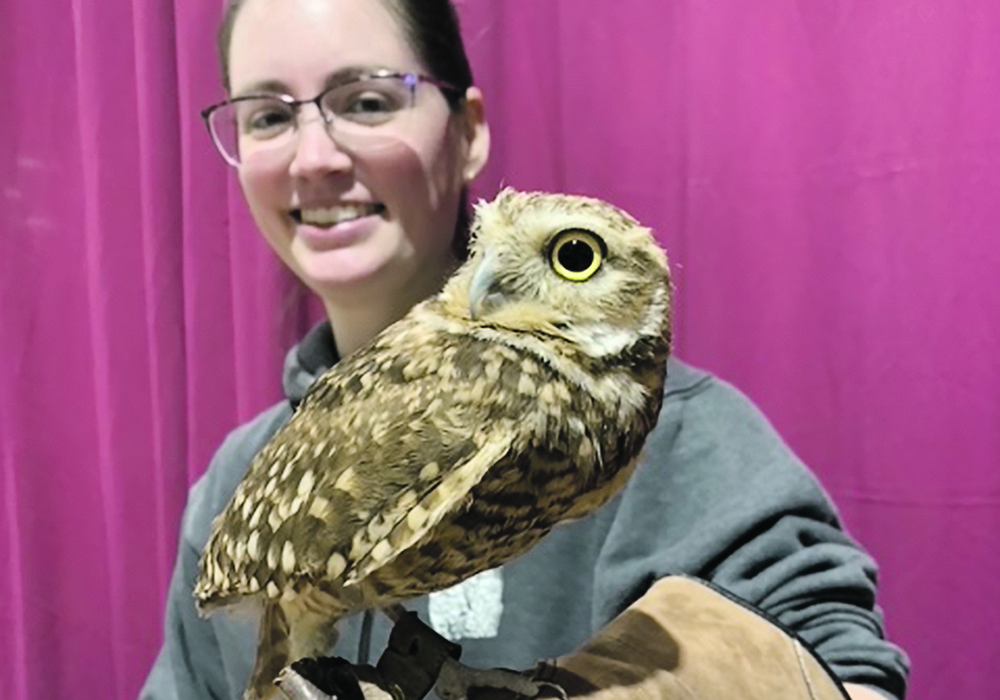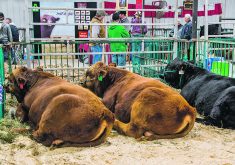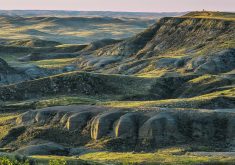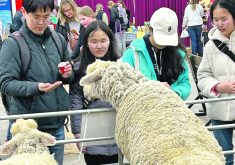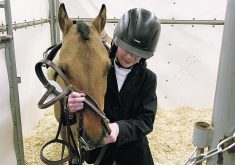The Manitoba Burrowing Owl Recovery Program uses Bindi to show the public that grazing is environmentally important
Bindi’s a pretty gal, with bright yellow and black eyes, a fluffy brown and coffee-coloured coat, and a head that rotates like you’d expect from an owl.
She’s not rattled by the hundreds of people who have come up to meet her at the Royal Manitoba Winter Fair. After all, she might even think she’s a person.
“She kind of associates herself with people,” said Jessica Riach, her handler and provider of the gloved arm that Bindi’s enjoying perching upon.
Read Also
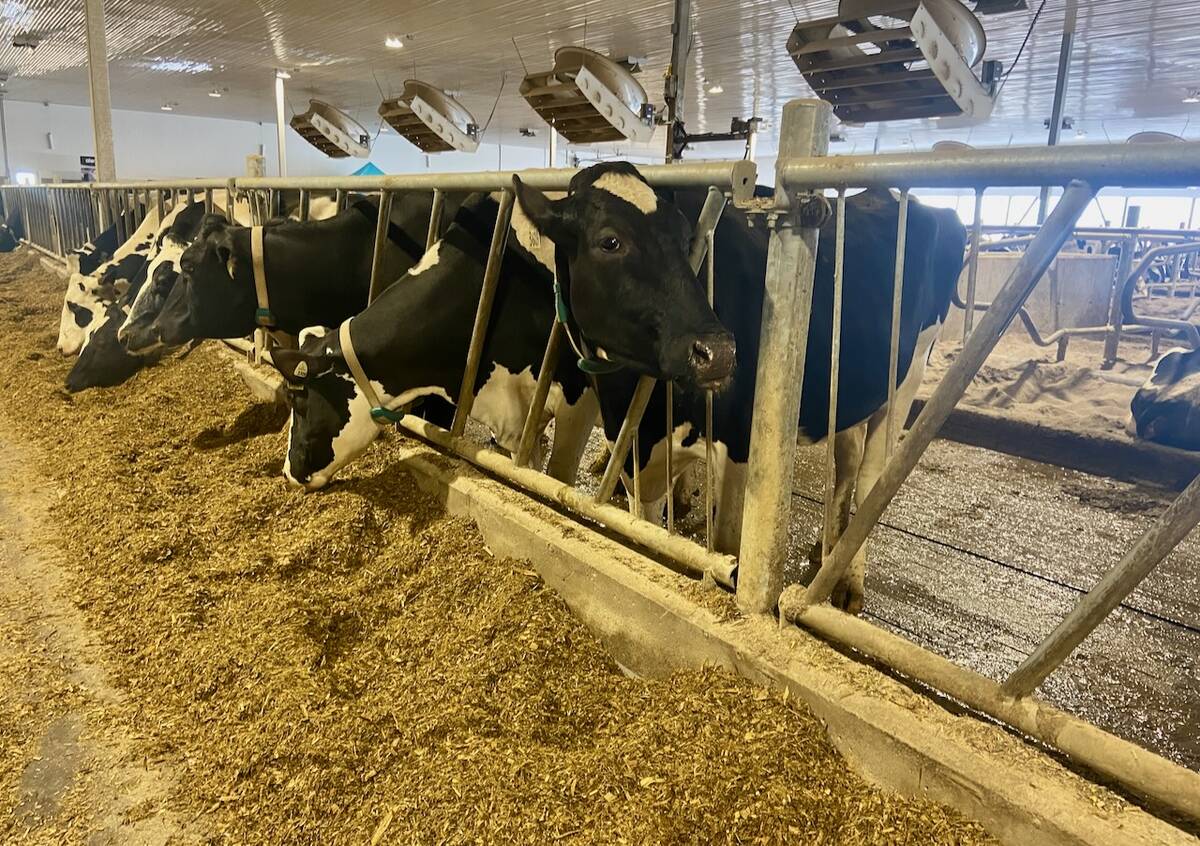
U.S. farm group supports supply management
U.S. grassroots farm advocacy group pushing new agriculture legislation that would move towards supply management like Canada has for dairy industry
“She’s pretty happy just to sit here and be around people.”
Bindi and Riach are employed by the Manitoba Burrowing Owl Recovery Program. Riach is involved during the warm months with reintroducing captive bred burrowing owls to the grazed pastures they need in which to thrive.
Bindi’s main job is public relations, exposing the public to an environmental reality that many people outside of cattle raising don’t realize.
“Burrowing owls require flat, grazed, open pastureland in order to nest,” said Riach as hundreds of children were milling about in Brandon’s exhibition complex, getting up close with chickens, sheep, dairy and beef cattle, and many other animals. It was the middle of Manitoba’s spring break and many families had brought their children to learn about all sorts of things.
Many urbanites don’t connect cattle farming with environmental preservation, even if they don’t see cattle as destructive. Few realize that cattle actually create the environment that endangered burrowing owls need to survive. The birds nest underground, in burrows they occupy after ground-dwelling varmints abandon them.
They need grazing land around them because otherwise the diminutive creatures can’t see predators approaching, and as little birds, they can’t see much growth or fight off anything significant.
In Prairie history, the bison provided much of this grazed habitat but now cattle fill that role.
“I think a lot of people are really surprised that just by having cattle on land, it really improves and preserves grassland. People don’t really think of that as preserving grassland,” said Riach.
Bindi is a west coast immigrant. She ended up in Manitoba after accidentally becoming imprinted with humans while being supplementally fed in a British Columbia captive breeding program. She was the runt of the nest and staff members were worried she was too small and weak to thrive in the wild, so she was well fed and unfortunately began associating herself with people rather than fellow birds.
Bindi appears to enjoy her work and didn’t seem tired by the flow of humans around her. She’s close by a display using live broiler chickens but doesn’t seem tempted to break in and eat the other birds. The burrowing owl’s size means they stick to insects, frogs and small mammals as prey.
The burrowing owl program is based in southwestern Manitoba and is supported by Manitoba Beef Producers as part of its biodiversity program.
In the past 10 years, it has reintroduced 72 pairs of owls, of which 64 made nests, producing 166 young so far.
More than 60 landowners have worked with the program to support creating and maintaining habitat for burrowing owls and other threatened grassland birds.
Last year, wild male owls appeared at some of the reintroduction sites, with one male pairing with a captive-bred female and producing a nest of seven young owls. That integration of the wild males into the captive bred sites tells program staff that the locations they’re selecting make sense for the owls.
For Bindi, hanging out at a bustling public event is a habitat that makes sense for her.
“Everybody loves her and she loves to be told how pretty she is,” said Riach.


